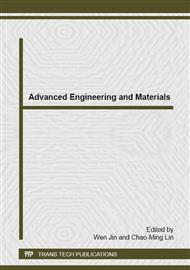p.129
p.135
p.139
p.149
p.154
p.160
p.166
p.172
p.177
Research on Wheel Loader Duty Cycle Test and Numerical Expression
Abstract:
A method to establish duty cycle was proposed based on wheel loader operating characteristics and features. Firstly, wheel loader operating characteristics, energy consumption and power distribution rules were summarized theoretically. Wheel loader energy consumption rules were explored through operating test. The features were extracted from testing data which can represent wheel loader operating rules. Finally, the duty cycle was composed according to the rules features arose in the actual operating test. The duty cycle will provide support for data files for hybrid wheel loader power system matching, computer simulation and dynamic analysis. Furthermore, the duty cycle will be helpful for traditional wheel loader dynamic matching, simulation analysis and numerical optimization.
Info:
Periodical:
Pages:
154-159
Citation:
Online since:
December 2014
Authors:
Keywords:
Price:
Сopyright:
© 2015 Trans Tech Publications Ltd. All Rights Reserved
Share:
Citation:


